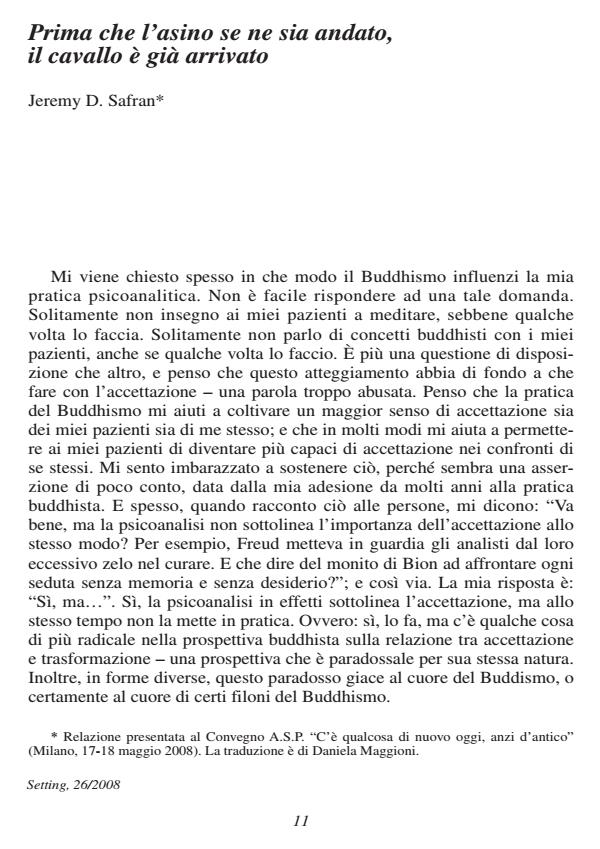Prima che l’asino se ne sia andato, il cavallo è già arrivato
Titolo Rivista SETTING
Autori/Curatori Jeremy D. Safran
Anno di pubblicazione 2009 Fascicolo 2008/26
Lingua Italiano Numero pagine 16 P. 11-26 Dimensione file 582 KB
DOI 10.3280/SET2008-026002
Il DOI è il codice a barre della proprietà intellettuale: per saperne di più
clicca qui
Qui sotto puoi vedere in anteprima la prima pagina di questo articolo.
Se questo articolo ti interessa, lo puoi acquistare (e scaricare in formato pdf) seguendo le facili indicazioni per acquistare il download credit. Acquista Download Credits per scaricare questo Articolo in formato PDF

FrancoAngeli è membro della Publishers International Linking Association, Inc (PILA)associazione indipendente e non profit per facilitare (attraverso i servizi tecnologici implementati da CrossRef.org) l’accesso degli studiosi ai contenuti digitali nelle pubblicazioni professionali e scientifiche
Prima che l’asino se ne sia andato, il cavallo è già arrivato - In this article I explore some of the implications of the Buddhist perspective on nonduality and acceptance for psychoanalytic practice. Nonduality is a mode of experiencing that breaks down the distinction between categories that are conventionally regarded as opposites8e. g., good versus bad, pure versus impure, sacred versus profane, heaven and hell). The Buddhist perspective on nonduality is that the natural human tendency to think about things in dualistic terms is at the heart of the problem and that wisdom is the ability to experience things nondualistically. As long as we distinguish between things as they should be in some idealized state versus things as they are, we are unable to be fully open to, and appreciate the present situation for what it has to offer. I attempt to convey a sense of way in which the cultivation of a nondual perspective can lead to a radical and paradoxical perspective on the role of acceptance in the analytic process.
Jeremy D. Safran, Prima che l’asino se ne sia andato, il cavallo è già arrivato in "SETTING" 26/2008, pp 11-26, DOI: 10.3280/SET2008-026002